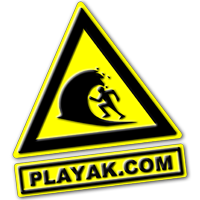[please login to make this ad block disappear]
Articles
C1: Foam Block Kitting for the Riot Glide
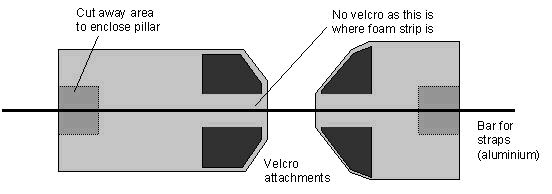
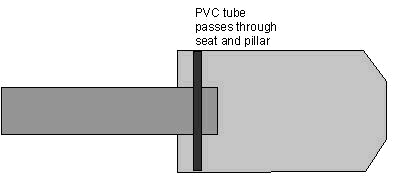
Everything described here is fully adjustable, but really secure, nothing would wash out of the boat (except the ankle blocks which are stuck on only by velcro) in even the gnarliest hole.
The other neat trick I have used is to use a piece of PVC plumbing pipe to make a hole through the pillar seat and rear pillar of the boat and through the top of the dash into the knee spreader, this lock everything together and makes sure nothing will come out.
The bar extends about 10-15cm either end of the cockpit and is not glued to the foam in any way, the upward force through the foam to the cockpit rim is enough to make everything nice and firm.
In my slalom boat I like to have toe blocks too but I haven’t figured out a way to put them into a plastic boat, if you know anyone who has let me know.
The outfitting is for my Glide but this technique could be applied to any decked boat. Anyway pictures speak loader than words so lets start:-
The first picture is of all the outfitting with the boat's foam pillars out of the boat. Notice that the seat overlaps each side of the rear pillar and there is a hole through the seat and pillar. If you slide some PVC pipe through the hole it locks the pieces together. The knee spreader also locks around the front pillar. Note: In order to be able to easily remove the outfitting you must be able to slide it into place - this means you can't glue velcro to the whole underside of the seat and knee spreader, the velcro attachments can only be on the edge that comes to rest last, ie. the edges of the seat and knee spreader which oppose each other in the middle.
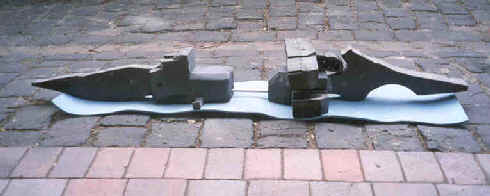
The outfitting is locked in place from lateral movement by the strips along the underside and held securely in place by the PVC pipe sideways through the seat and by virtue of the knee spreader locking around the front pillar. In practice I have found that it only takes a small amount of velcro to securely fix the large foam blocks in place and prevent movement. The diagram below gives a better description.
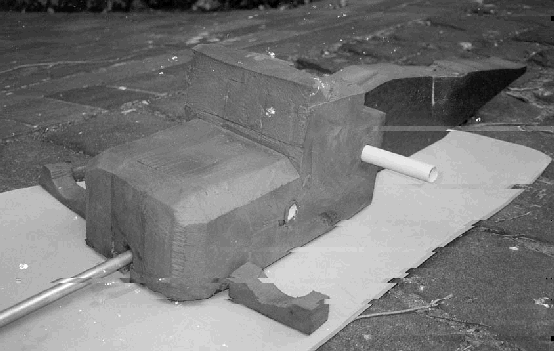
The next picture is a close up of the seat so you can see the PVC pipe. It is important to have a fair amount of height in the foam at the back of the seat, this stops you from sliding backwads - especially when doing vertical moves or when you are being trashed in a hole. The seat is about 14cm high, the height at the back of the seat should be to the height of the cockpit rim or slightly above. (Seat height is all about a compromise between stability, comfort and leverage/power/reach - the former calls for a lower seat the later two for a higher seat). The ankle blocks are held in position just by velcro (they are only a luxury anyway).
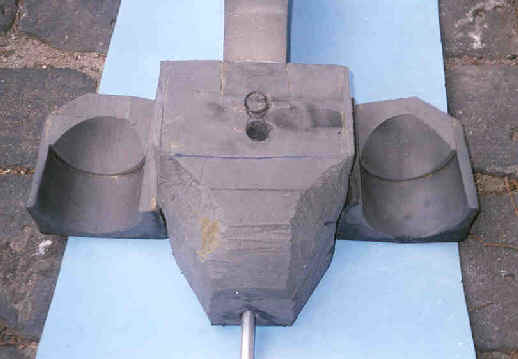
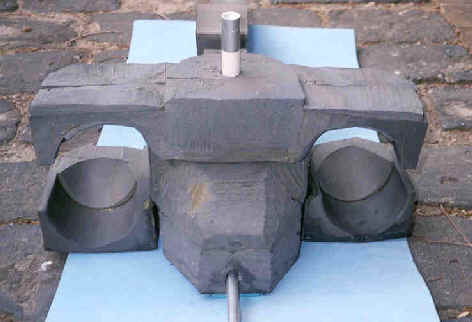
The next photo is of the cockpit from above. If the knee blocks are not long enough some foam just below the blocks to hold the upper bit of your shin at the same level as your knees really helps for comfort. The straps are attached to the seat bolts. On riot boats there is a nice smooth bit which makes a good spot to glue on some hip pads. Hip pads are important as they provide another means of contacting the boat and give better control when leaning, and it is more comfortable than pressing against the cockpit rim!
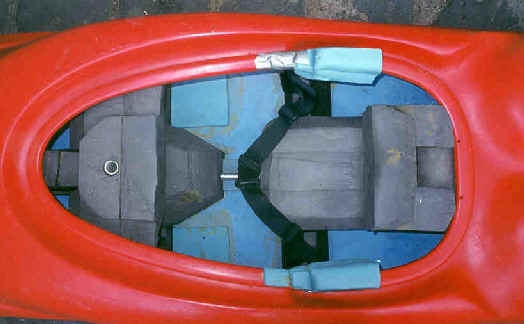
The next photo is of the cockpit from above. If the knee blocks are not long enough some foam just below the blocks to hold the upper bit of your shin at the same level as your knees really helps for comfort. The straps are attached to the seat bolts. On riot boats there is a nice smooth bit which makes a good spot to glue on some hip pads. Hip pads are important as they provide another means of contacting the boat and give better control when leaning, and it is more comfortable than pressing against the cockpit rim!
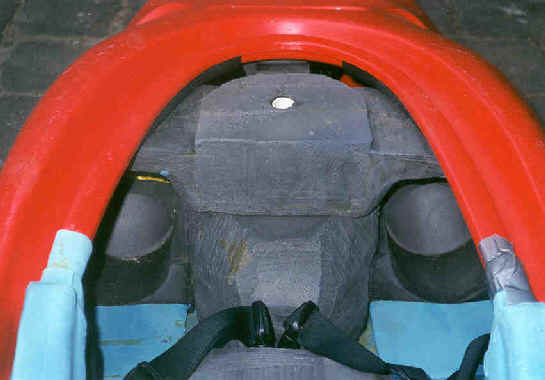
The last photo is a close up of the front of the cockpit, the setup is really comfortable, the narrow cockpit covers a fair bit of your legs helping to lock you in, bacause of the narrow cockpit, there is no need for a a wood or metal strip over the dash, the foam plus the narrow cockpit is enough to lock the knees down. It is really important to set the kneeblocks as wide appart as possible as this gives the maximum possible stability. The widest part of the glide is just in front of the cockpit which really lends itself to a C1 setup, but this principle should be applied to setting up any boat as a C1.
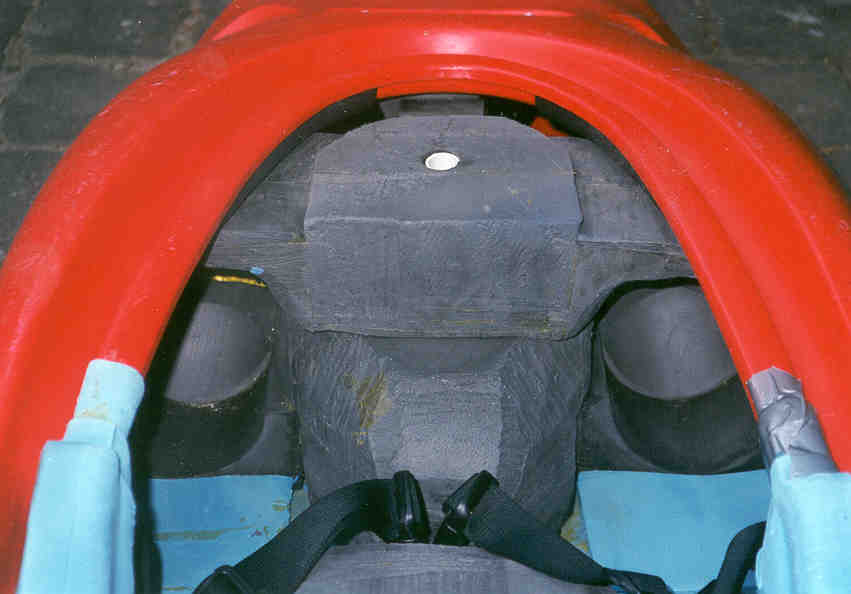
I should mention the straps, I have used 55 mm webbing with fastex buckles, the straps are adjusted to the right length so there is no tedious tightning every time you get into the boat. The length the straps are adjusted to is locked off by tri-glides, these hold quite well but do slip and become looser over a few hours. With the setup in this boat straps are not really necessary for river running but do help for rodeo, however they also make a wet exit very difficult. This may not be the case for all boats - the glide is a tight boat though. Normally I would say you should be able to wet exit the boat without unbuckling the straps, if you can't then you are paddling at your own discression and at your own risk.
It's a lot of foam, probably at least 1kg heavier than a kayak. The glide makes an excellent C1 but it's only suitable for smaller guys due to the very narrow cockpit which your hips are right in the middle of. If you are a bit on the tubby side or have wide hips you just won't fit in, but you should be able to apply this system to any boat.
Paddle hard and play harder.
Info source
[mail address protected from spambots with javascript]
